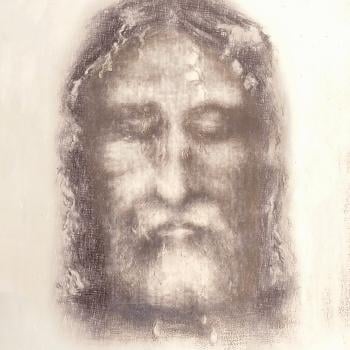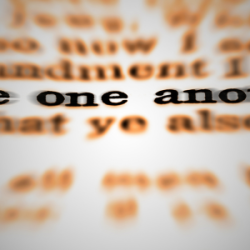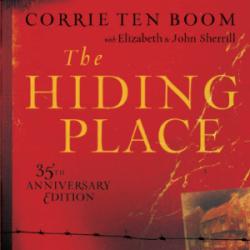Stoker, however, was not content to rehash old legends that had been available for centuries. Rather, he wrote a modern tale of horror that begins with Jonathan Harker, an agent for a London real estate firm, on his way to Dracula's castle in Transylvania to discuss a piece of property Harker's firm had purchased for the Count in London. In Transylvania, Harker is warned against the evil Count by the local peasants but nevertheless proceeds on his journey. At the castle, Harker is attacked by Dracula's wives, and the Count crafts a plan whereby coffins full of his native earth are transported from Romania to the ruins of Carfax Abbey near London, from where he will lure England's young virginal females into the ranks of the undead. In England, the Count is challenged by Dr. Abraham Van Helsing, a Dutch physician wise in the vampire's ways. Van Helsing, Harker, and Harker's fiancée, Mina, who was herself bitten by the Count, discover the vampire's hiding places of earth and chase Dracula to Transylvania where, in the novel's climax, Harker severs Dracula's head from his body, thus freeing himself and his betrothed from the curse of the undead.
Winifred Graham and The Love Story of a Mormon
Within fifteen years of the publication of Stoker's book, The Church of Jesus Christ of Latter-day Saints, active in Great Britain since 1837, experienced what Malcolm R. Thorp identifies as four anti-Mormon campaigns between 1911 and 1926 that met with varying degrees of success. The cultural image of a sinister, predatory vampire penetrated many of the cultural expressions connected with that crusade.
A key figure in all of these anti-Mormon campaigns was British authoress and anti-Mormon crusader Winifred Graham, also known as Mrs. Theodore Cory. Graham, who claimed to be the most published authoress in England with eighty-eight books, wrote six anti-Mormon suspense novels and a highly critical history of the Church. In 1924, Elder David O. McKay, president of the Church's European Mission, expressed little use for Graham's activities when he wrote to President Heber J. Grant, "The activity of the Saints in Britain in tracting is arousing the devil, who is manifesting his evil designs through his co-partner Winifred and her ilk."
The Love Story of a Mormon was published in 1911, at the height of an anti-Mormon movement that began in Liverpool. Capitalizing on a campaign marked by rallies, speeches, and newspaper stories against English girls being seduced and taken to Utah by lustful Mormon missionaries, Graham's novel was set in Liverpool (called "Riverpool" in the book).
A young working-class girl, Jacinth Abbott, is approached by a Mormon missionary, Ziba Wayne, a "wonderful vision of all-conquering manhood." She is instantly "magnetized by a pair of large brown eyes, set in a singularly attractive countenance." Wayne gives her some tracts and Jacinth returns home to her parents, who become suspicious of their daughter's desire to break off her engagement to an up-and-coming businessman in the area. Meanwhile, at Wayne's encouraging, Jacinth convinces her girlfriends to listen to the elder's strange new religion and tales of spiritual wifery in Utah. The missionary extends a hand of welcome to each separately, "the mesmeric hand which knew its own power." They are all treated to a bogus demonstration of raising the dead when Wayne revives a young girl in a passing caravan of gypsies. Meanwhile, Jacinth's parents find the Mormon pamphlets in their daughter's room and, having listened to speeches against Mormonism and read the exposé articles in the newspapers, they conclude that the Mormons have designs on their young daughter.
Jacinth's jilted fiancé hires a detective to monitor Jacinth's mysterious behavior and travels since, he declares, "[the Mormon's] chief prey appears to be women and girls." Sensing danger, Elder Wayne devises a method to get Jacinth away from her suspicious parents. His sister, he tells Jacinth, will pose as an authoress offering her a job as a traveling companion to Germany. The ploy is successful for a time, but Jacinth's fiancé eventually tracks the pair to Wayne's lodgings in London. There Jacinth is prepared for baptism until Wayne's "sister" reveals that she is not his sister at all, but his first wife. Jacinth confronts Wayne with her newfound information, and he condemns both Jacinth and his jealous first wife to death. Jacinth must now plan an escape. Fortunately a detective, who posed as a waiter at the restaurant where Jacinth and Wayne had dined the previous night, had given her a scarf to use as a sign of distress. She hangs it from her window, where it is visible to her fiancé and the detective lodged across the street. When Wayne and a confederate return from meetings that evening, expecting to find the condemned women dead from gas inhalation, the detective and Jacinth's fiancé, together with a cadre of London bobbies, arrest the missionaries and quickly take them to jail. There Ziba Wayne commits suicide, and Jacinth and her reunited fiancé are happily wed in an orthodox Christian ceremony.




